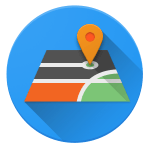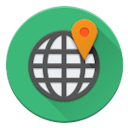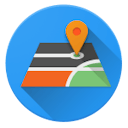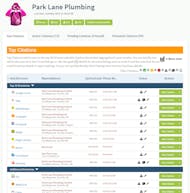Local SEO Services
INTERNET MARKETING
PAY PER CLICK
SEO SERVICES
LOCAL SEO
CONVERSION OPTIMIZATION
CONTENT MARKETING
“Why local businesses simply can’t afford not to be visible locally on Google.”
Why Local SEO?
Over half of the mobile customers who looked up your local business online today will visit your local business tomorrow. But with Google changing the local search algorithms every other day, it isn’t getting any easier for local businesses to appear on top of local searches. Google has reduced the number of first-page local results to three, down from seven. And with Rich Snippets, 5-star ratings, reviews, photos, and other Micro Data included in the local results, driving traffic from local results on Google is not a walk in the park anymore.

LOCAL SEO
Local SEO Audit
Before we go to town optimizing your website for local searches, we carry out an in-depth Local SEO Audit to find out the trouble spots and determine a course of action. The Audit helps us answer the following questions:
- Which particular elements on your website or landing page are incomplete or poorly optimized for local search?
- How convincing is your presence on the Local SERP? Do the Rich Snippet Data, 5-star ratings, reviews, and contact info appear as they should?
- How are your competitors’ websites performing in local searches and what actions do you need to take to make the eat humble pie
Local SEO Campaign Process
Armed with the knowledge about your Local SEO standing, optimization issues, and competition, we activate the Local SEO Campaign Process, a tried and tested framework that has proven to deliver spectacular results for our clients every time. Here’s what it looks like:
Complete the Local SEO Analysis in all Detail and Crystallize Findings
Formulate a Plan of Action through Analysis, Consultation, and Brainstorming
Implement the Devised Strategy by Tweaking One Element after the Other, According to an Exhaustive Checklist (scroll down to see the steps)
Monitor the Results for a few Months After Local SEO has been Carried Out
We take this Mike Tyson quote to heart and remain on the lookout if something is not working. Google algorithms can change, as can your competitors’ strategy. We help you keep up by continuously monitoring, adjusting, and improving your approach.
You can rest assured that as a Google Premier Partner Agency, GMI will use only white-hat Local SEO techniques that culminate in your resounding and lasting success.
Initiating Launch Sequence
Now that we have the route map spread on the drawing table, we’re ready to start optimizing your local search presence. Google’s Local SEO used to involve optimizing Google Places and Google+ pages some time ago. These days, it’s Google My Business that’s the focal point of all your local optimization efforts.
Before We Start
Google has made some rapid changes to the way local search results appear on Search Engine Results Pages (SERP), and for all we know, it’s not going to stop. In the screenshot to the right, you’ll notice that Google has detached Google+ pages from the results. It has also done away with Google Places, and now, Google My Business is the starting point for Local SEO.
The third change that Google has made, as we already mentioned, is that the local search results are now down to a ‘3-Pack’ instead of the previous ‘7-Pack’. Users have to click the ‘More …’ button to view more local businesses. So, if your business was at number 4–7, now it’s not on Google’s front page anymore. No wonder if your traffic is dropping!

LOCAL SEO
Step #1: Optimizing Google My Business
The business-related portions of your Google Places or Google+ Pages have been automatically merged into Google My Business Dashboard. If you never had a Google Places or Google+ account for your business, you can “Get on Google” and search for your business by name and address. When you have an optimized Google My Business account, your business becomes visible on Google Search, Maps and Google+.
Here are the actions we take on your Google My Business Page:
1. Claim your Google My Business Page and make sure there are no duplicates
Many companies have duplicate versions of their Google+ Page created over the years, due to various reasons. Multiple Google My Business Pages can hurt your Local SEO efforts. We find and destroy all duplicate pages and record the URL of your primary Google My Business Page for further work.

LOCAL SEO
2. Verify Your Google My Business Page
You can’t really start optimizing your Google My Business Page unless it’s verified by Google. It’s a simple process completed by phone or mail. You can see a “Verified” stamp beside your business name on Google My Business Dashboard when your business is successfully verified.

LOCAL SEO
3. Provide Your Domain Email on Google My Business Page
In order to look more legitimate, your Google My Business Page should have your domain email instead of your gmail address listed on it. It’s always the small things that inspire trust, so we make sure the email on your Page points to your domain.

LOCAL SEO
4. Check that Your Business Name is Correct
Consistency is the key to Local SEO, and it starts with your business name. Your name should follow Google’s guidelines and be consistent everywhere on Internet. Google does not allow including unnecessary info with your business name. Example: Steve’s Coffee Shop cannot be named Steve’s Coffee Shop—Best Coffee in Toronto.

LOCAL SEO
5. Make Sure Your Address is Correct
Your business address must be 100% accurate and follow Google’s address guidelines. The address on your Google My Business Page, website, directory listings, and every other online place must be identical.

LOCAL SEO
6. Is Your Phone Number Correct?
The phone number on your Google My Business Page must be your current local phone number with the area code. Do not use an 0800 number or an old number that got changed some time ago.

LOCAL SEO
7. List the Correct Website URL
This should be a no brainer. Make sure you point your Google My Business visitors to the correct website or landing page. Businesses with multiple locations need to have a separate Google My Business Page for each location, with the URL pointing to the specific landing page for that location.

LOCAL SEO
8. Use the Correct Business Category
In this most crucial step, we list your business under all correct categories that describe your business accurately. For this, we stick with Google’s guidelines and use different online tools to find the primary category that relates to your business most closely. Then, we add more relevant categories to broaden the canvas of local searches for your business.

LOCAL SEO
9. List the Correct Business Hours
A no brainer, again; though businesses with seasonal working hours need to keep updating the listed hours of operation when needed.

LOCAL SEO
10. Create a Proper Business Intro
In this step, we develop a crisp and compelling business description that portrays your business accurately and includes links to important pages on your website.

LOCAL SEO
11.Check that Your Profile is 100% Complete
A no brainer, yet again!

LOCAL SEO
12: Use the Correct Logo, Cover, and Profile Photos
We upload the proper profile picture, logo, and cover photo to the business identity section of your Google My Business Page. High quality identity photos can be crucial for achieving a high click-thru rate (CTR). The photos are displayed beside Local search results in some categories, and when someone clicks on your Google Maps search results.

LOCAL SEO
13. Add a Virtual Tour (Optional)
If you want, we can engage a Google’s recommended photographer to shoot a virtual tour of the inside and outside of your business. This will be added to your Google My Business Page, so your virtual visitors can have a look.

LOCAL SEO
Step #2: On Page Local Optimization of Your Website and Landing Pages
According to MOZ, on-page signals are the top ranking factor for Local search rankings. We recommend that you optimize your site for Local SEO during the development stage, because most of the times, businesses can neglect the basics when building their websites. When they come to use later on for Local SEO, we have to go back in and apply the fixes to get the site up to speed for local searches.
Here are the elements we optimize in this step.
1. Configure Google Analytics and Search Console
We set up or request access to your Google Search Console and Analytics and ensure that the www and non-www versions of your site are added, along with the https version if available.

LOCAL SEO
2. Design a Proper Site Structure
If you’ve come to us during the website development stage, we shall propose the proper site structure from the Local SEO perspective. It will depend on the nature of your business. For instance, a company with multiple business locations will have a different site structure from a company that serves many different areas from a single location.

LOCAL SEO
3. Use the Correct NAP on Website
We cross-match the NAP info on your website, landing page, and Google My Business Page to confirm that it is correct and consistent.

LOCAL SEO
4. Optimize Title, Headings and Meta Descriptions
We use top industry tools to review your existing page titles, H-tags and meta descriptions, then optimize the relevant pages by including your city, state, and keyword in the title and description. The catch here is to keep the title and description compelling while still containing your location info. We also optimize your H1 to H6 tags for Local SEO.

LOCAL SEO
5. Write a Unique and Compelling Landing Page Description
Our experienced Local Business copywriters create a comprehensive but brief and compelling description for your landing page. The copy is targeted at your local customers and optimized with proper keywords.

LOCAL SEO
6. Display Your Hours of Operation
We make sure that your working hours are prominently displayed on your website or landing page in text format, so that Google’s spider are able to read them. We also mark your working hours with schema markup (covered under Step 3 below) to feature them as a Rich Snippet in your SERP results.

LOCAL SEO
7. Display Customer Reviews and Testimonials
Customer reviews and testimonials are the most powerful trust signal on your landing page. According to research, 88% of customers say they trust Internet reviews as much as a personal referral. However, we strongly recommend using only real reviews from real people. We also include links to your Review Profiles on Yelp, Google+, Facebook, Angie’s List, and other prominent review sites (discussed in Step #4 below).

LOCAL SEO
8. Image Size and Image SEO
We use different plugins and tools to resize the images on your website or landing page, so they load faster and display properly across all viewing devices. We also insert ALT text tags containing your city and state name for all the images on your site or landing page, so that the Local search spiders can find out what your photos are about.

LOCAL SEO
9. Ensure Mobile Friendliness
Most of local searches now take place on mobile. And with Google’s mobile-friendly update already in effect, your site will not display for mobile searches unless it’s mobile friendly. We follow Google’s mobile friendly guidelines and deploy a number of tools to make your website, or at least the landing page, mobile friendly. The amount of work involved depends upon how your site is built, but you just can’t turn your back on the lucrative mobile traffic, which has the highest conversion rates.

LOCAL SEO
10. Optimize Site Speed
Site speed impacts your Local SEO as well as user experience. We test your site speed and take the necessary actions to minimize the page loading times.

LOCAL SEO
Step #3: Using Schema Markup
Have you heard of schema before? Simply put, it is a snippet of code that defines different sections of information on your website. The advantage of using schema markup is that the selected data will be shown with your SERP results in the form of Rich Snippets. This can dramatically enhance your appearance among the local search results, and boost your local traffic.
1. Local Business Markup
We mark up your contact info, working hours, geo coordinates, logo, and business type. There are tons of options for business type on schema.org, and we use the one that best suits your business.

LOCAL SEO
2. Review Markup
The Rich Snippets displayed for local searches can also include the number of reviews and average 5-star customer ratings, if you mark the reviews with proper schema markup. We strongly suggest using only genuine reviews, as Google can penalize businesses for fake reviews.

LOCAL SEO
So, are you ready to start multiplying your local traffic and customers?
As you may have noticed, there’s much more to Local SEO than usually meets the eye of local businesses. It’s a lot of work and a full-time job that only a professional SEO agency can do justice with. Attention to detail and consistency are the key to better ranking, which is the key to more organic and in-store traffic.
If you don’t optimize for Local searches and your site drops to number 4 or below on Local SERPs, you may be losing a hefty share of your business while the top 3 companies laugh all the way to the bank!

LOCAL SEO
5. Competitor Review Analysis
We generally recommend having 10 reviews before you start Local SEO. However, you may need many more reviews if you’re doing business in an ultra competitive industry, such as the restaurant or tourism industry. The key is to take reference from the top Local results in your category, and gun for a compatible number of reviews.

LOCAL SEO
4. Competitor Citation Analysis
We run Brightlocal’s Citation Tracker on your website to generate a list of potential citations that your top 5 competitors already have. We also run Yext and Moz Local scans on your competitors to see where they stand.

LOCAL SEO
3. Competitor Citation Analysis
Using the same tools we used for link analysis, we draw a complete picture of your competitors’ monthly organic traffic, top-ranking keywords, and the percentage of traffic those keywords drive. We also analyze the mobile traffic and the keywords driving that traffic.

LOCAL SEO
2. Analyze Competitor Backlinks
We use tools such as SEMrush, Aherfs, Screaming Frog, and Moz Open Site Explorer to check the backlink profile of your major competitors. We find out and record the DA, PA, and the number of backlinks from different root domains. The purpose is to give you the edge by build more high quality backlinks organically through content marketing. As you may know, backlinks are the most important search signal to determine domain authority.

LOCAL SEO
1. Identify your local competitors
Just search with your local keyword and its variations and see which companies appear most consistently among the first-page 3-Pack, and then on the Local SERP when you press the “More Places” button below the 3-Pack. We make several searches and record the findings on a spreadsheet.

LOCAL SEO
Step #7: Competitor Analysis
Finally, when your Local presence has been tidied up from all angles, it’s time for a comprehensive competitor analysis. It will uncover your competitors’ strategies and enable us to apply the finishing touches to your Local SEO.
The Decisive SEO Boost
The advanced optimization techniques executed in this step help your business stand out from competitors and acquire a unique strategic advantage. You can say this final step is the proverbial ‘cherry on top’ that gives the decisive push to your Local Rankings and makes your SERP presence irresistible for your customers.
Insights that Competitor Analysis Provides
- Your top 10 competitors for local keywords
- Competitor back-links and how to better them
- Competitor citations and the loopholes that you can exploit
- The target number of reviews you need to make an impressive SERP entry

LOCAL SEO
Step #6: Link Analysis
The ‘do-follow’ links leading to your website from other quality domains are a direct measure of your domain’s authority. Spammy incoming links, on the other hand, can result in your site being hit by a Google Penguin Penalty. The aim of the link analysis is to make sure there are no potential problems that could demote your Local rankings in the future. Here are the steps we follow:
Check your current website’s Domain Authority and the Page Authority of you landing page using tools like MozBar
Check your existing link profile using Open Site Explorer, SEMrush, or Majestic to find out if there’s a large number of links coming from overseas or low quality domains
Confirm there are no manual action penalties in you Google Search Console and take remedial actions if there are any
Review Google Analytics to analyze if the site has been hit with an algorithm penalty like the Panda Penalty

LOCAL SEO
Step #5: Collecting Customer Reviews
The Local search results feature the number of customer reviews beside your shiny 5-star ratings. Together, the number of reviews and the gold-star ratings play a crucial role in driving you more local customers. For example, take a quick look at the search results for ‘toronto home contractor’. Which particular result are you more likely to click?
How to Get Reviewed on Top Platforms
We gear up your entire local online presence to generate customer reviews across multiple review sites. The methods that we recommend and adopt include:
- Customer Handouts: Use in-store handouts with simple instructions on how customers can review your business on Google, Yelp, Facebook, Trip Advisor, or other places.
- Email with Links to Review Pages: This is a highly effective strategy if followed correctly. We suggest you send an email with review links to every customer who buys your product or registers for your service.
- Have a Review Page on Your Own Website: We set up a review page on your website, from where your customers can directly go to the review page of your Google+ Page to write a review.
Places We Target to Get You Local Reviews
We follow a diversified reviews strategy and go beyond Google+ and Yelp to build your review profile on all relevant sites. These may include, in the order of priority:
- Google+ (Google+ will also ramp up your AdWords campaigns should you be investing into these: G+ reviews may appear alongside your ads on Google)
- Yelp!
- Trip Advisor
- Industry Sepcific Review Sites
- Yellow Pages
- Yahoo! Local
- Angie's List
- BBB
- Merchant Cicrle
- Judy's Book
- Citysearch

LOCAL SEO
Step #4: Building Citations
Remember that Google measures trust factor and user experience to rank your website during local searches. Therefore, it’s critical to have a clean and authoritative profile, so that Google may see you as a trusted business and rank your site higher.
Citation Building Process
Our citation building process kicks into action after your Google My Business Page is correctly configured and you are already seeing the results in the form of more and better quality local traffic. Citations will only add to the numbers.
Manual Vs Automatic Citation Building
In order to give you maximum control over your citations, we build citation manually. There are automated listing services like Yext that will submit your citations for an annual fee, but you will lose your listings if the fees are not paid. Besides, you won’t be able to personalize your listings, which is crucial for providing a better user experience.
We do, however, recommend using Moz Local, because it will list your business in 4 major data aggregators—Acxiom, Localeze, Factual, and Infogroup—for a small annual fee.
Citation Audit and Analysis
Before moving ahead with manual citation building, we conduct an in-depth audit of your existing citation profile. Older businesses are likely to have lots of previous citation issues, including incorrect NAP info, whereas newer businesses need to make sure that incorrect information has not been passed around by automatic aggregators.
Tools that We Use for Citation Audit
• Brightlocal—to compare your competitors’ citations • Moz Local—to explore top citation services like Google, Bing, Axicom, etc • WhiteSpark—to check the 50 top citations for your business • Yext—to run a quick citation analysis
3 Things to Check during Citation Audit
• Improper NAP info in listings • Closed locations with addresses that are still valid • Duplicate listings
3 Types of Citations that We Build
With the audit completed and the citation plan prepared, we start building three type of citations for your business. • Global Citations in major National and International directories • Industry Citations in industry-relevant directories • Local Citations in your city or province’s business directories, local chamber of commerce, etc
Top 15 Citation Places
Depending upon the nature of your business, we build citation on some of the following biggest and most authoritative citation platforms: • Bing Places • Yelp • Facebook • YouTube • Yellow Pages • Big 4 Data Aggregators (Infogroup, Acxiom, LocalEze, and Factual) • Yahoo! • LinkedIn • Angie’s List • Manta • BBB • FourSquare • Merchant Circle • Mapquest • Hotfrog
This is just the start. We have over 1000 citation sources to chose from and you may build hundreds of more citations on your own if you want to outperform competitors in a tough niche. We set you up with a strong citation profile to build upon.

LOCAL SEO
3. Event Markup
Schema markup for events can work for any type of event and increases the odds of your event showing up under your company’s name in local search results. This works perfectly for theaters, restaurants, clubs, exhibition halls, and all other businesses that regularly host events.
Real Clients, Real Results:
MEDICAL BUSINESS
CONSTRUCTION BUSINESS
MOVING COMPANY
ECOMMERCE
Copyright My Internet Marketing 2023 | All Rights Reserved | Privacy Policy



















